Whether you’re interested in recycling glass at home or are simply interested in glass chemistry, you might wonder where the glass comes from and what happens to it when it is thrown away. By now, you already know that glass is made from sand, which makes you wonder, can glass be converted to sand?
Glass can be converted back into the sand, but the resulting grains will be too pure to mimic naturally occurring mounds of sand. Intentionally adding 5% impurities, including but not limited to limestone, gravel, and minerals will turn ground-up glass into regular sand.
In this article, you will learn everything you need to know about glass formation from and conversion to sand. More specifically, you will learn about the specific quartz responsible for glass and the percentage in which it is found in sand, alongside the various uses of glass sand.
You’ll be introduced to beach glass and sea glass towards the end, but we must start by looking at standard sand and glass recycling to set the stage for that.
Table of Contents
- 1 Glass Recycling And Sand
- 2 Disposing Of Glass Sand
- 3 Re-Creating Glass
- 4 How Long Does It Take For Glass To Become Sand Naturally?
- 5 Ground Glass Uses By Size
- 6 How Would You Make Sand Out Of Glass?
- 7 Creation of Glass and Recreation Of Sand: The Complete Breakdown
- 8 Can Sea Glass Be Converted Back Into Sand?
- 9 Is Beach Glass Natural?
- 10 Final Thoughts
- 11 What Is Panda Glass | Ultimate Guide To Panda Glass
- 12 Can Heat Break Glass? Temperature & Fracturing Explained
- 13 Why Is Glass Polar? – Glass Polarity Explained!
Glass Recycling And Sand
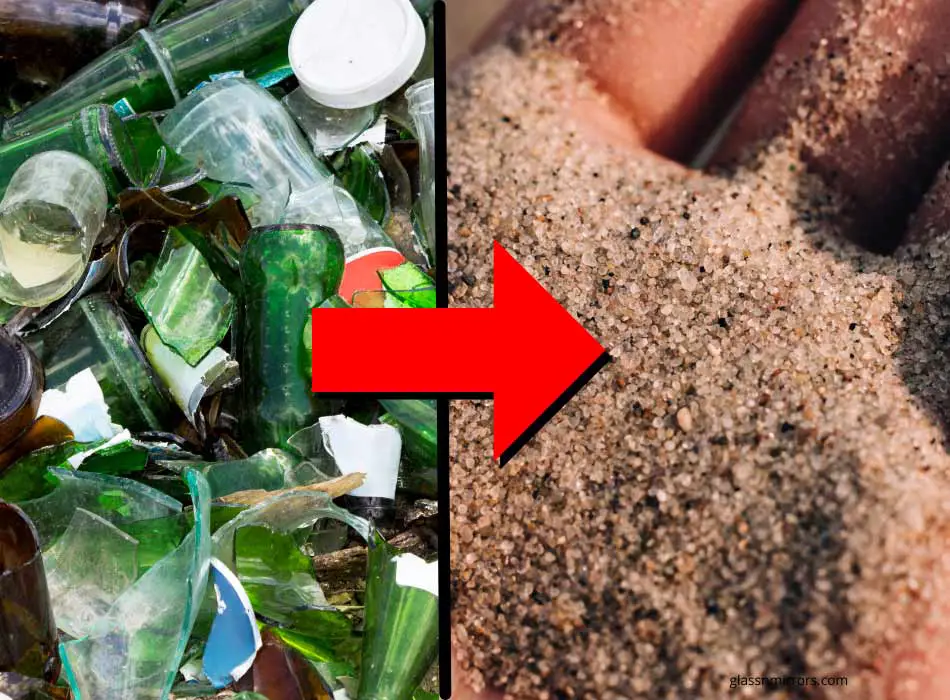
When glass is recycled, it is first ground up to the point of being indistinguishable from sand. This crushed-up material breaks down into crystals slightly larger than sand particles and can be used as raw material for new glass.
One cannot melt this “sand” and create glass because liquifying crushed up glass can cost more than the resulting glass sells for. But if other materials are added in the process, the amalgamation can be supercooled at a lower cost resulting in recycled glass that costs almost the same as a regular batch of glass.
Can you make glass without sand? I did some research to find this answer – Check it out!
While glass sand can be used instead of natural sand when manufacturing glass, the two aren’t 100% interchangeable. Natural sand is not as pure as crushed-up glass and contains:
- Rock/Granite particles
- Quartz crystals of silicon dioxide
- Limestone
- Minerals
Compared to that, glass is a supercooled version of separated silicon dioxide. Crushed-up glass can be mixed with limestone and granite particles to form proper sand or can be left as an ultra-purified form of sand.
But the point of crushing glass to sand-sized crystals is to minimize its impact on the environment, which can be the case only when it is disposed of in a place where it occupies a similar function as sand or is used to create glass or other products.
Glass can become sand as long as other minerals
are added so that it mimics real sand!
Disposing Of Glass Sand
Crushed-up sand can be disposed of at a beach where the waves have eroded the shoreline. It must be pre-mixed with limestone and other materials to mimic the beach sand’s original composition.
Given that silicon dioxide accounts for a majority of the sand, mixing in the small quantities of other quartz, minerals, and rocks should not be too costly. The cost isn’t the reason why glass sand disposal isn’t recycling companies’ favorite route for crushed-up glass.
Here Are the Drawbacks of Disposing of Glass Sand
Liability
One cannot sue nature or God for accidents that happen in nature. If a toddler swallows sand at a beach, the parents might blame a Baywatch guard, but there’s no sand maker to go after.
When a company dumps artificial sand, it can be liable for any misuse of or accident with the glass sand. In the example of a toddler swallowing sand, the glass sand might do just as much harm as natural sand yet will result in more severe legal action.
Danger
While properly crushed up glass turns to purified sand; it remains crushed up glass until it reaches a certain degree of fineness. Depending on how confident you are in your glass crusher, you might take a risk in disposing of it in the open.
But remember, even if the crystals are large enough to be seen by the eye at a 2-feet distance, they’re large enough to cause scars and penetrate the skin.
With the above established, you can see why companies that grind glass have to ensure that the powder is used to create solid glass once again.
Re-Creating Glass
Glass can be recycled almost endlessly as long as one is willing to add 5% raw materials that facilitate reaction time improvement in the manufacturing process. Here is how glass sand is recycled into fresh glass.
Glass Objects Are Obtained via Recycling Bins and Donation Programs
Trucks collect glass bottles, jars, etc., from dedicated recycle bins or donation centers, and bring their haul to the recycling facility. The collected items range from 100% glass items to unrecyclable material that contains no glass.
Pure Glass Products Are Sorted Out for a Later Stage
The pulverizing stage is a long way from the collection sorting stage. Still, some glass items feature 100% glass and need to be separated early on. In contrast, other products contain little to no glass despite being placed in a recycling bin. Such items need to be taken out early as well.
Mixed Materials Are Further Sorted With Machines
Different recycling facilities feature different sorting mechanisms for hybrid material. In most cases, the hybrid contents are crushed and separated based on consistency. Let’s take the example of a glass bottle with brand label paper wrapped around it.
When crushed, the paper has no hold over the glass but gets mixed with it. An industrial air blower is used to separate paper from glass. On the other hand, material that weighs close to glass but breaks into larger chunks can be separated with sieves of different sizes.
Separated Glass Is Pulverized
Pure glass items are separated at the second stage and glass bits crushed and separated from hybrid items are pulverized into ground cullets of various sizes at this stage. Not all glass is ground to the same degree, and only a portion of it is broken down to the size of sand particles.
Ground Glass Is Sorted by Size
When glass is ground up in an industrial pulverizer, not all of it turns into sand. The portion that does is separated at this stage. There are cullet grounds larger and finer than sand particles, and they’re separated into different batches as well. Each type of ground has its own uses.
How Long Does It Take For Glass To Become Sand Naturally?
It takes glass over a million years for glass to become sand naturally and can take even longer if the glass is in a landfill. Finely ground up glass can turn into sand almost instantly when it is mixed with non-silicon-dioxide materials found in natural sand.
Since cullets have uses far more economically advantageous than creating artificial sand, glass is rarely used to recreate sand. A bulk of the glass recycling cost comes from separating procedures, which is why glass that is already separated is almost always recycled or reused, while glass that’s too hard to separate is dumped in a landfill where it should be assumed wasted.
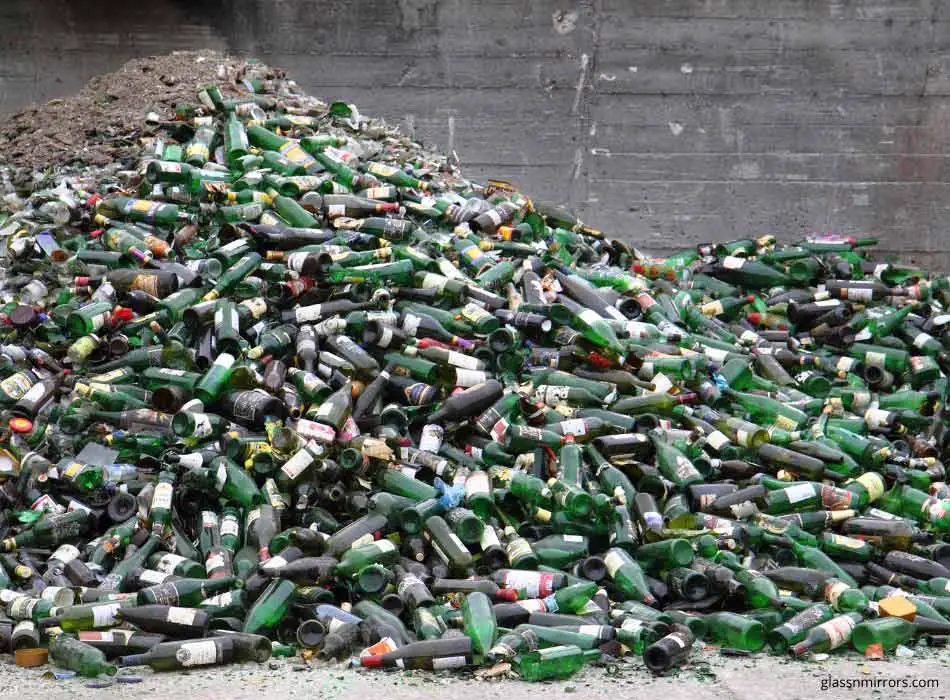
Ground Glass Uses By Size
Ground glass doesn’t have a uniform size and is sorted into pebbles, sand, and powder, with each having a range of uses. The table below covers the possible uses of glass that has been converted to sand is crushed to pebble size or is ground into fine powder.
| Glass Pebbles | Glass Sand | Glass Powder |
|---|---|---|
| Used to manufacture glass containers | Used as filler in paint, plastic coating, and acrylics | Used to trap dirt in swimming pool filters |
| Useful in making fiberglass | Used to root hydroponic plants (that aren’t planted in soil) | Useful for facilitating friction in matchbox strips and ammo |
| Used for sandblasting | They are functional replacements for natural clays in cation exchange processes. | Used in metal foundriesUses of glass sizes when broken down
How Would You Make Sand Out Of Glass?To make sand out of glass, you would separate glass items from their non-glass components like plastic and paper, then crush them in a glass pulverizer. The grounds would be sorted with a sieve to retrieve sand-sized particles and mixed with ground rocks or natural sand. The separation of silicon dioxide is a key step in the formation of glass from sand and has to be reversed to create actual sand. This cannot happen without adding what was initially removed from natural sand when the glass was first manufactured. A common misconception regarding glass and sand comes from the formation of the former in nature. Creation of Glass and Recreation Of Sand: The Complete BreakdownGlass is naturally formed when sand gets molten in lava and is cooled by nature or when it gets heated instantly by a flash of lightning and gets cooled by water, tide, and breeze. In both cases, glass can be found in sand or sand ash. People who observe this assume that all the contents of a specific batch of sand got converted into glass and can therefore be turned back into sand. A play-doh ball turned into a stick can be converted back into a ball because nothing is subtracting from the material’s chemical makeup. When the sand turns into glass, certain contents do not make it into the super-cooled liquid we know. Among the things that get separated are minerals, limestone, gravel, and rock particles. As long as these materials are re-added to the ground glass in the same quantities, you will get a batch of sand that is chemically identical to the source material. There’s also a difference between natural glass and artificial glass. Natural glass is formed by an uncontrolled process and doesn’t have the same consistency and quality every time. It doesn’t even have the same chemical composition each time, either! With industrial manufacturing, you need predictability, which is why sand is sourced to have the highest silicon dioxide yield with minimal unwarranted quartz presence. While stone and minerals can get left out by the heating and cooling process that creates glass, quartz of different kinds found in sands at various beaches around the world can melt and cool alongside silicon dioxide when creating glass. That’s why lightning glass and lava glass have low opacity and sometimes feature-heavy colors. For industrial glassmaking, quartz crystals that can interfere with the final look, shine, and opacity of the glass are left out at the sourcing stage. This makes glass a derivative product that doesn’t possess all the chemical contents of beach sand. Can Sea Glass Be Converted Back Into Sand?Sea glass can be converted back into sand, though it might feature bright colors depending on the glass source. While the glass grounds will have the consistency of sand, they might look different compared to the beach from the seashore on which it washed up. 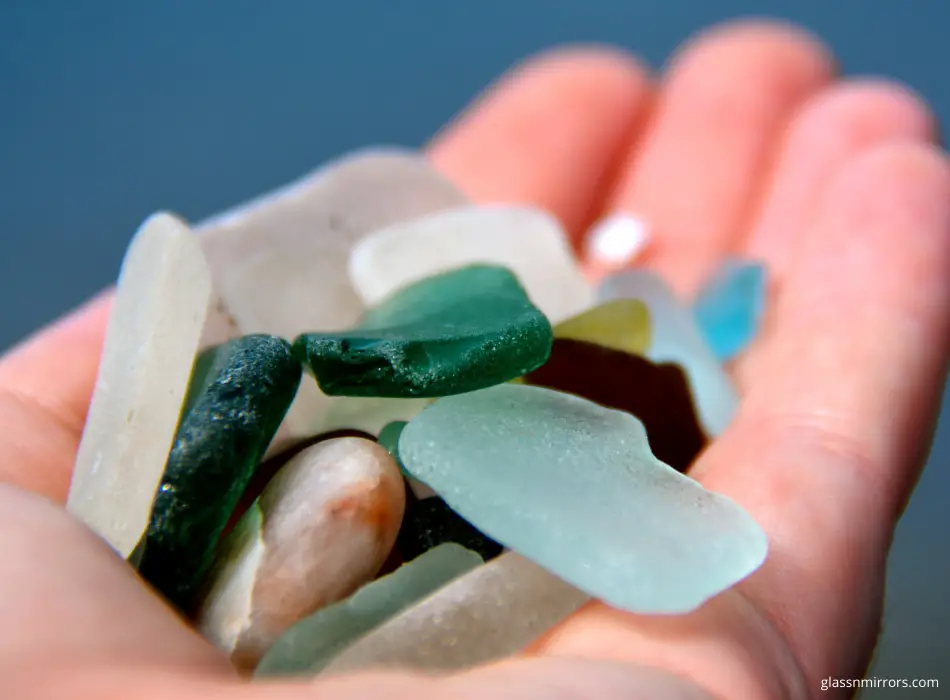 It is worth noting that sea glass is not entirely natural. It is created by water pressure on glass shards that find their way into the sea. Water pressure on broken glass results in smooth spheres and pebbles of glass. The process can take anywhere between three to five decades, which makes sea glass partially natural, but artificial manufacturing processes play a major role in providing the raw material for it. Sea glass can wash up on a beach, but it doesn’t come from the sand of the same beach necessarily. Is Beach Glass Natural?Beach glass is not natural. It is a version of sea glass that comes from freshwater while sea glass comes from saltwater. The latter is more frosted and requires polishing, while the former is naturally cleaner. Neither beach glass nor sea glass is made without artificial interference. Sea glass can be converted into sand that looks more natural, but beach glass sand is closer in chemical composition to real sand. That’s because sea glass has a heavy Sodium Chloride presence on its surface (salt deposits). Grinding it can result in a mix of sodium silicate and sodium chloride grains. But since it isn’t too shiny, it will look more like regular sand. Final ThoughtsGlass can be converted into a purer version of sand that’s ready for use in glass manufacturing. However, the result isn’t precisely the same as natural sand because around 5% of sand contents are left out when manufacturing glass. Impurities like limestone, gravel, and minerals need to be added in similar proportions to turn glass into sand.
Author
Derrick Thompson
I have spent many years as a glazier working with glass and mirrors and this medium never ceases to amaze me. I decided to start this website to help share what I have learned and hopefully educate people about these wonderful building materials.
|
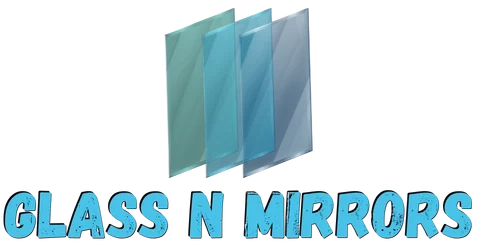
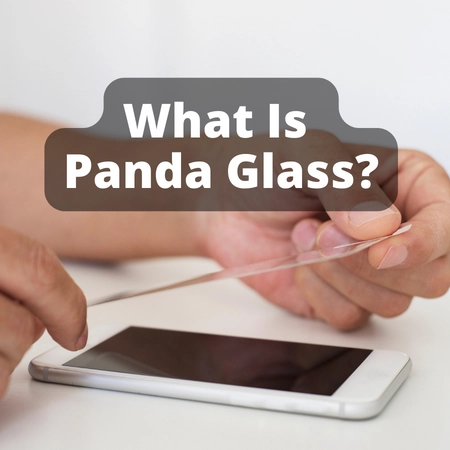


2 thoughts on “Can Glass Be Converted Back Into Sand? [Hint: Sort Of]”
Comments are closed.